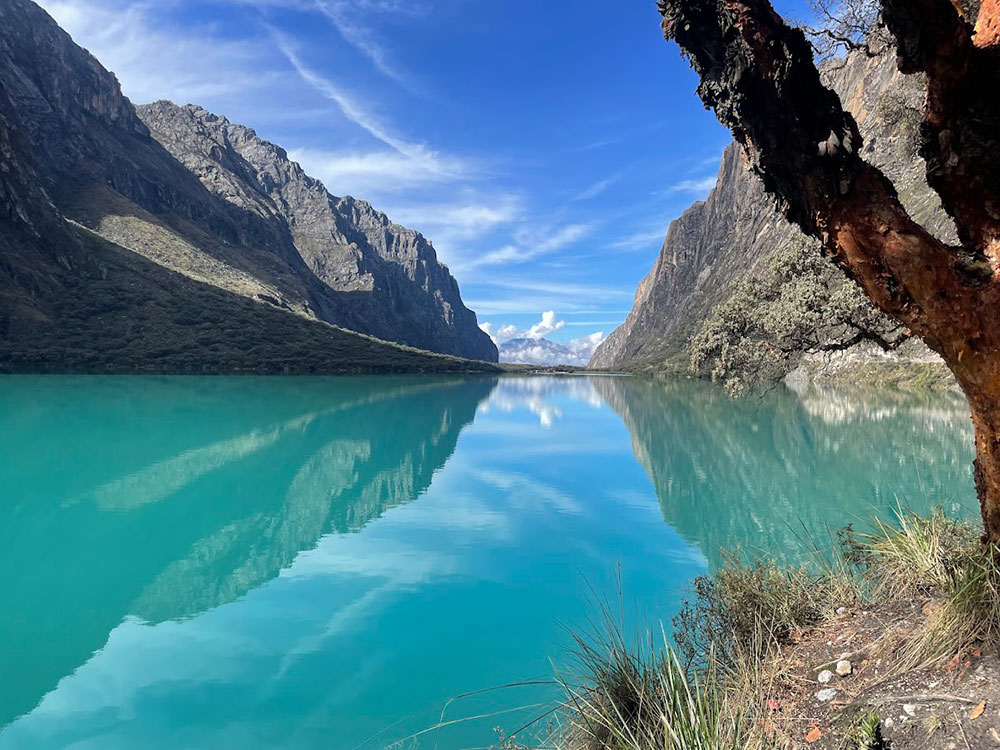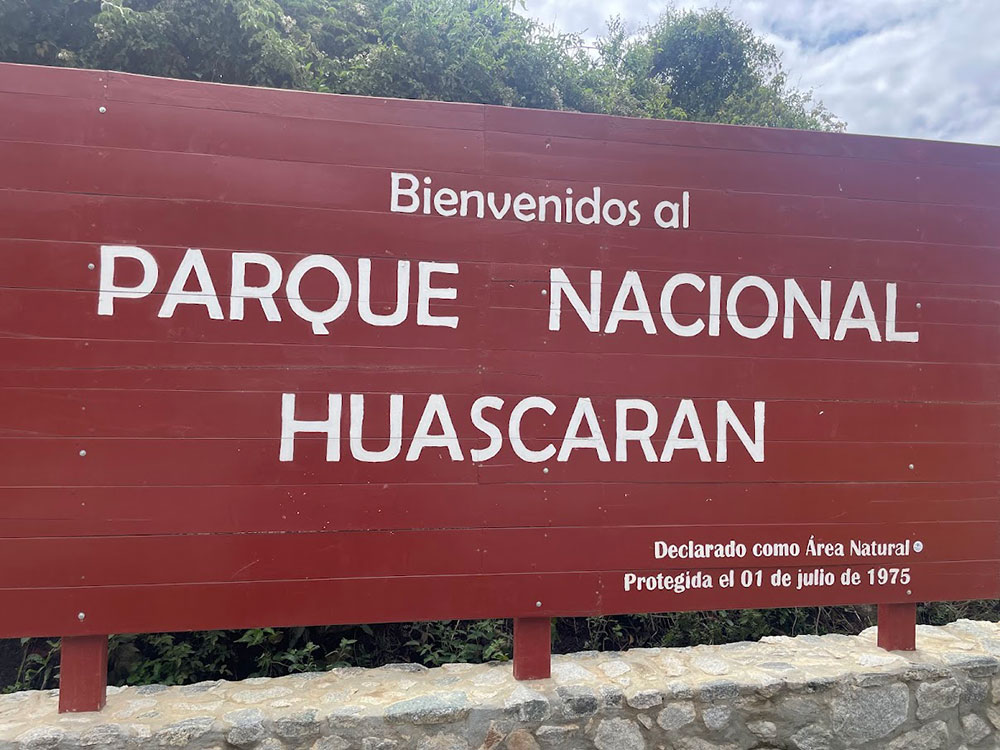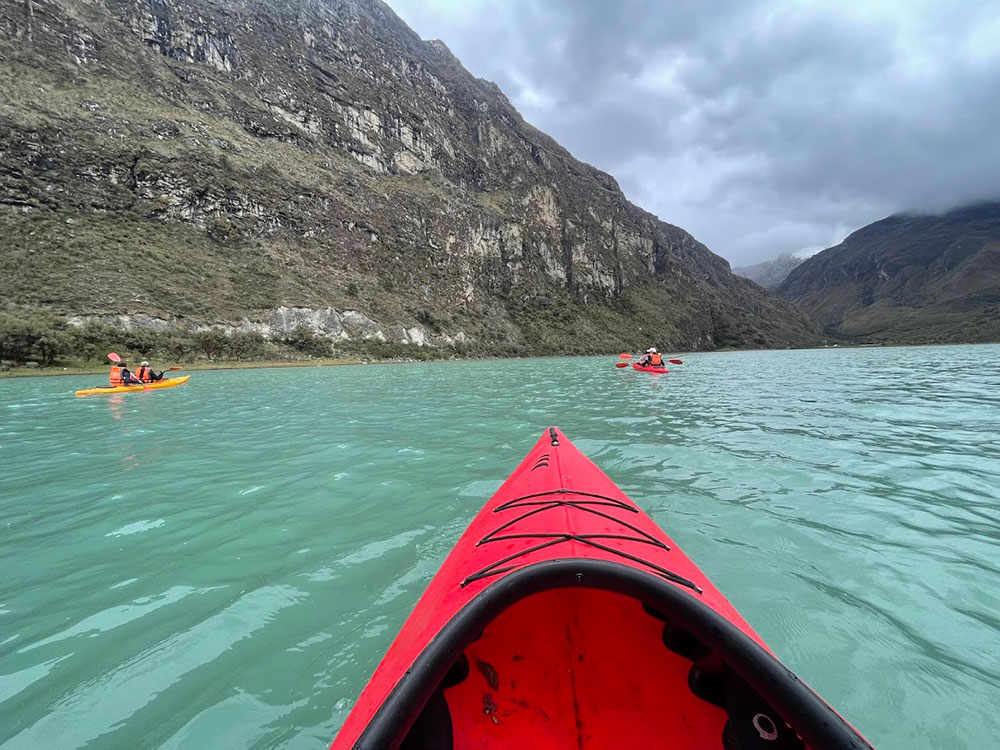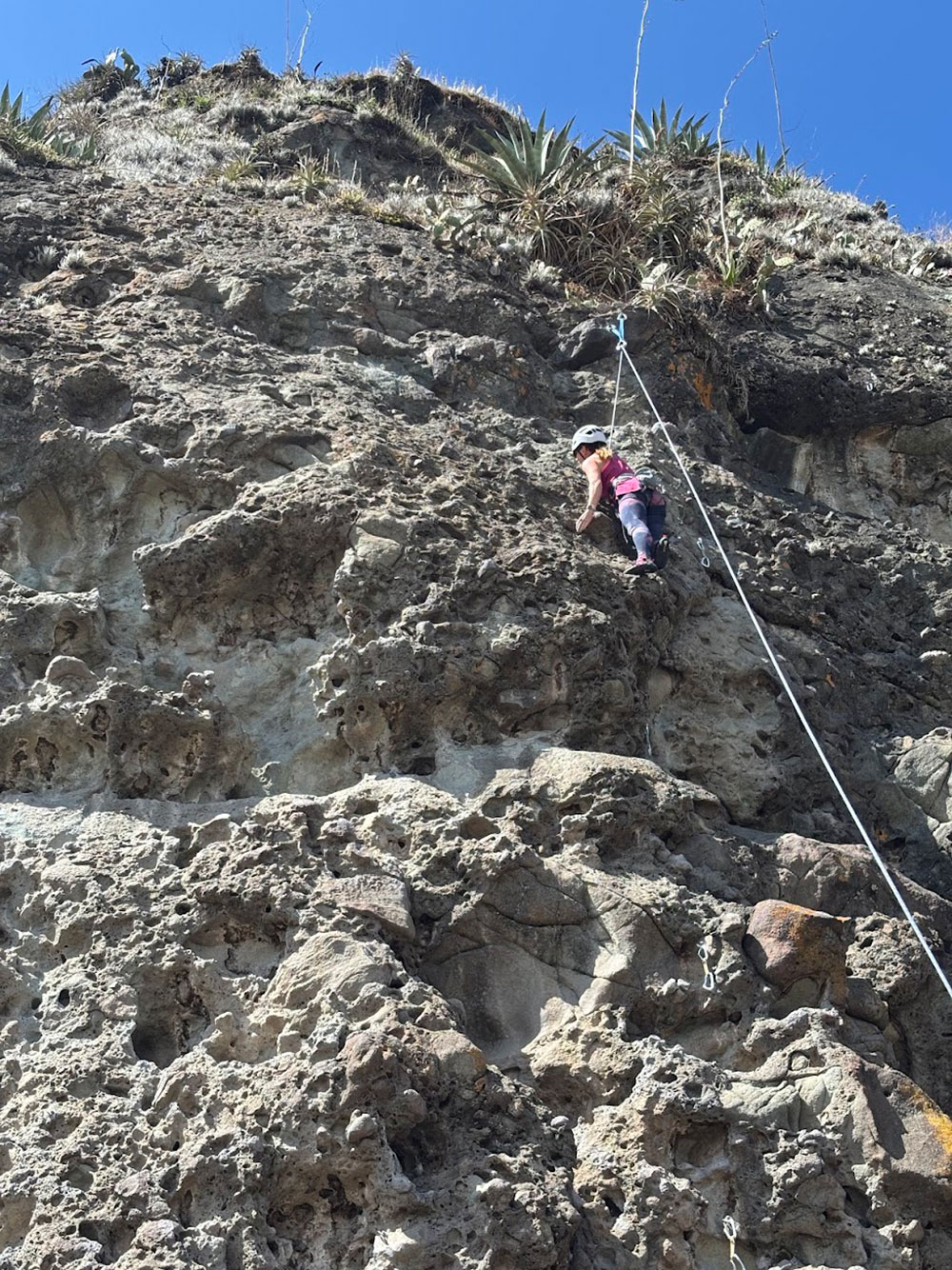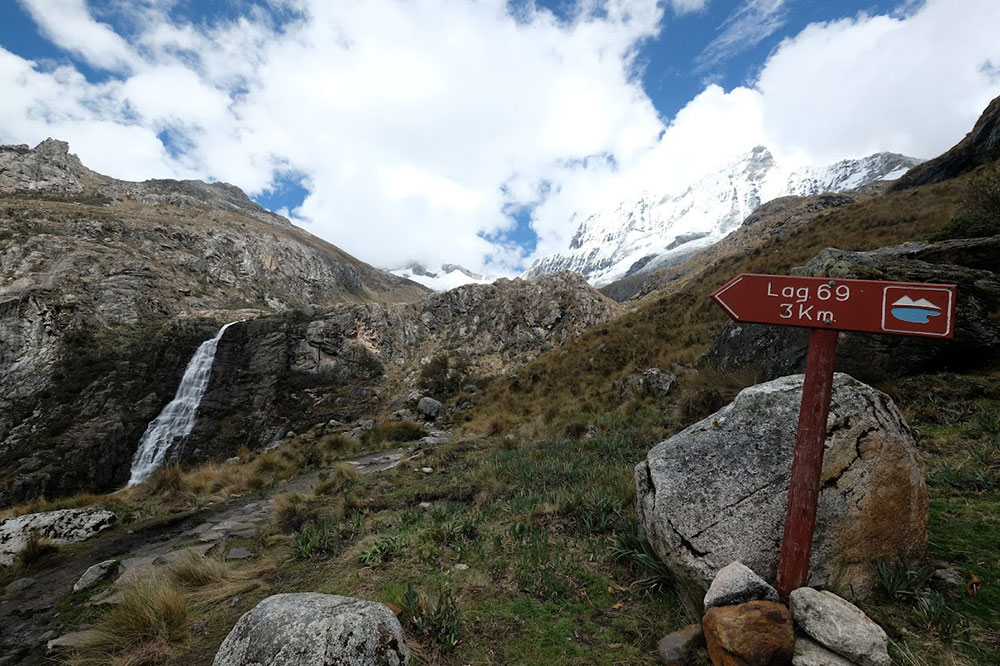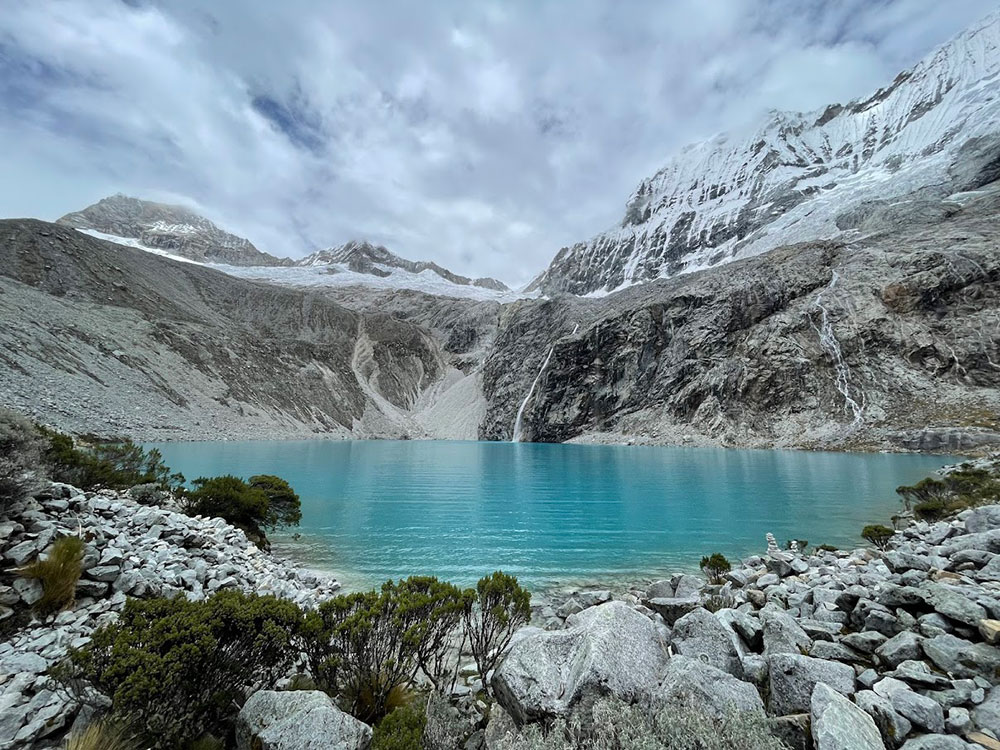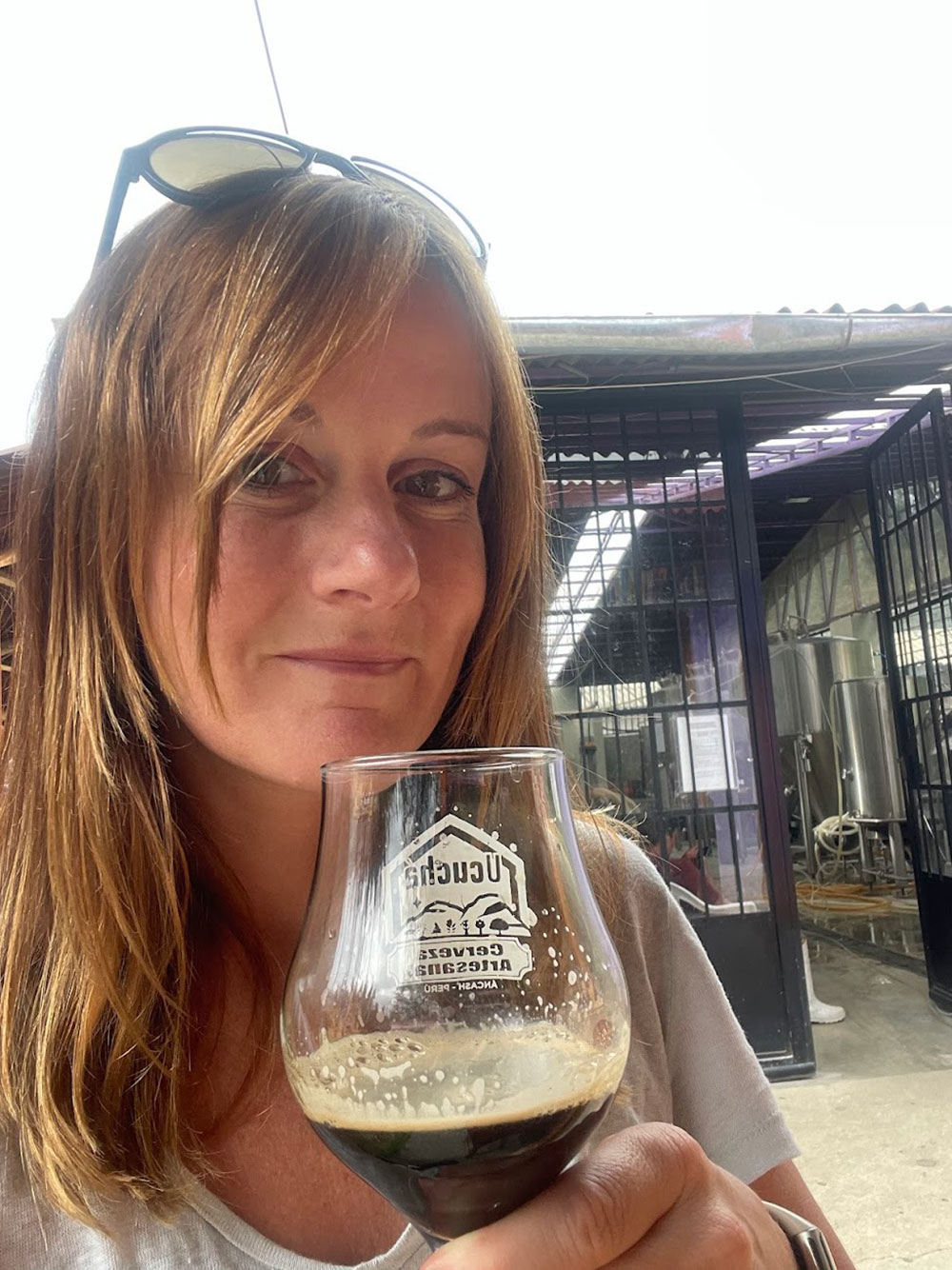The turquoise waters of Llanganuco Lagoon shimmer beneath the jagged peaks of the Cordillera Blanca. We push off in kayaks, slicing through the glassy surface in silence. “Copper sulphate,” says our guide Alberto Cafferata. “It absorbs all colours but turquoise.” He points at the snowmelt pouring in from the glacier above. “That’s what gives the lake its glow.”
This isn’t just postcard beauty—it’s serious high-altitude adventure. We’re paddling at 3,800 metres in Huascarán National Park, a UNESCO Biosphere Reserve and one of Peru’s 14 national parks. The stats are impressive: 660 glaciers, 300 lakes, and 35 peaks over 6,000 metres. This is the highest tropical mountain range in the world — and you feel it in your lungs.
We paddle for about an hour, and the setting is extraordinary: ice-capped ridgelines above, twisted polylepis trees along the shore, and barely another person in sight. “Most people come for the open space,” Alberto says. “To learn about the plants, the mountains, how everything connects.” He gestures to the surrounding cliffs: “This is Orconcocha, but it’s part of the Llanganuco system. Most people only know the name Llanganuco.”
We circle the north shore, learning about geology, then paddle south toward birdlife and vegetation. Every tree, he tells us, is native — nothing introduced survives at this altitude. “The polylepis trees are special,” he adds. “They can live 400 years. But more than that — they protect everything else.”
After an hour or so on the water, we rest our paddles. Alberto nods at the twin lagoons. “There’s a Quechua legend here. Two forbidden lovers, Huascar and Wandi, turned to lakes — always close, never joined.” It fits the atmosphere. The mountains feel watchful. Time slows down.
Back on land, Alberto explains that the park contains 365 navigable lakes. “But tourists? They only visit five or six,” he shrugs. “We’re trying to change that — to spread people out, protect the wildlife. And kayaking is a way to do that. It’s low impact, and you see the landscape differently.”
Rock and Ridgelines
Just outside Huaraz—Ancash’s high-altitude hub for mountaineers and trekkers—I spend a morning climbing at Los Olivos. The crag is limestone, well-bolted, and catches the sun from early morning. The approach is easy, the routes sharp and clean.
It’s a far cry from the big glacier ascents Ancash is famous for — Alpamayo, Tocllaraju, Huascarán — but climbing here has its own appeal. The altitude alone is a challenge. We’re climbing at 3,100m, which makes even the warm-up feel intense. The rock is varied enough to suit beginners and those prepping for tougher peaks.
There’s no real scene — just a few climbers chalking up and enjoying the stillness above the city. Others can train here before heading into the national park. And with views over the valley and the peaks beyond, you can see why.
The Hike to Laguna 69
A few days later, we’re up before dawn for what many call one of Peru’s most beautiful day hikes: the route to Laguna 69. It’s no secret trail, but it’s far from overrun — especially by Andean standards.
From Huaraz, we drive through high valleys and past prickly pear farms, fields of lupin, and villages rebuilt after the 1970 earthquake. Henri, our guide, chats non-stop about local flora—muña for altitude, native herbs for headaches, queñua trees for warmth and firewood. Stuff you’d walk past unless someone pointed it out.
We pass signs marking prehistoric routes and stop at the base of the trail — already at 3,900 metres. The first section is deceptive: grazing cows, gentle switchbacks, and waterfalls tumbling down either side. We pass two smaller lakes — Yanganuco and Orconcocha — whose deep green hues contrast with the bare granite around them.
Then it gets tougher as the path narrows and zig zags and the air thins. At 4,200 metres we stop for coca tea. I’m grateful. My legs feel leaden, and my breath is shortening. Henri, meanwhile, bounds ahead, calling out sightings of chinchillas in the rocks.
Finally, reach a plateau — and there it is.
Laguna 69. A perfect turquoise bowl beneath sheer cliffs and hanging glaciers. Huascarán looms in the background, its summit often obscured by swirling mist. Waterfalls tumble from the ice into the lake below.
There’s a hush at the top. No shouting, no music. Just a handful of hikers quietly eating boiled eggs or sitting on rocks, stunned into silence. I do the same. Even standing right in front of it, the colour looks fake — too vivid, too blue.
No Frills, Big Thrills
Huaraz doesn’t have the polish of Cusco or the colonial beauty of Arequipa. But that’s the point. It’s tougher, higher, and more physical.
You can hike for hours and see just a handful of people. You can paddle lakes no one else has heard of and climb in the shadow of glaciers, sipping mountain tea.
And thanks to a new one-hour flight from Lima, it’s now easier to reach than ever. No more 8-hour bus rides unless you want them.
“The season now starts earlier,” Alberto had mentioned. “From late April to late October, we’re seeing more people come. The weather’s changing — but it’s still wild up here.”
The question is what happens next. More people will come — for better or worse. But for now, this is still a place that belongs to its peaks, not its profile. A place where nature isn’t just the setting — it’s the story.
And for those chasing adventure? Ancash still feels like discovery.

